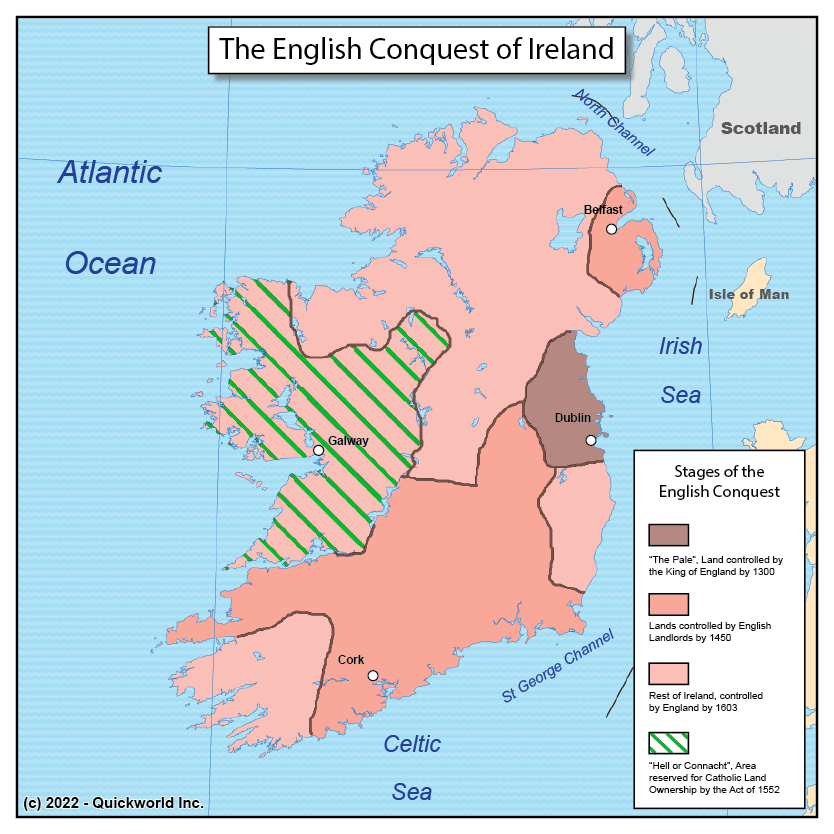England's conquest of Ireland took place over many centuries. It started in the 12th Century with the settlement of Normans coming from England. Normans were of Viking origin, but the Anglo-Normans were companions of William the Conqueror, who was originally a landowner in France, and they had adopted French as their language.
The early Anglo-Norman settlers, while a dominant force on the island, were mostly integrated with the original Celtic population and by the 15th Century, had ceased to refer to their English roots. Around 1300, the King of England himself started to show interest on its neighbouring island and established a "pale of settlement", that is, a region open to English settlers, around the city of Dublin.
It would take another three centuries for English landowners to control the entirety of the island, which by 1542 was declared to be the Kingdom of Ireland, with the King of England as its monarch. By then, land ownership was reserved to Protestant men of English origin, except in a small part in the West, where ownership of land was permitted for Irish and Catholics.
In 1802, the Kingdom of Ireland merged with the Kingdom of Great Britain to form the United Kingdom. This lasted for over a century, until the partition of 1922 and subsequent independence of the Irish Free State. As of 2022, the United Kingdom is still in existence, as the Northeastern part of the island remains in union with Great Britain.
The English Conquest of Ireland


